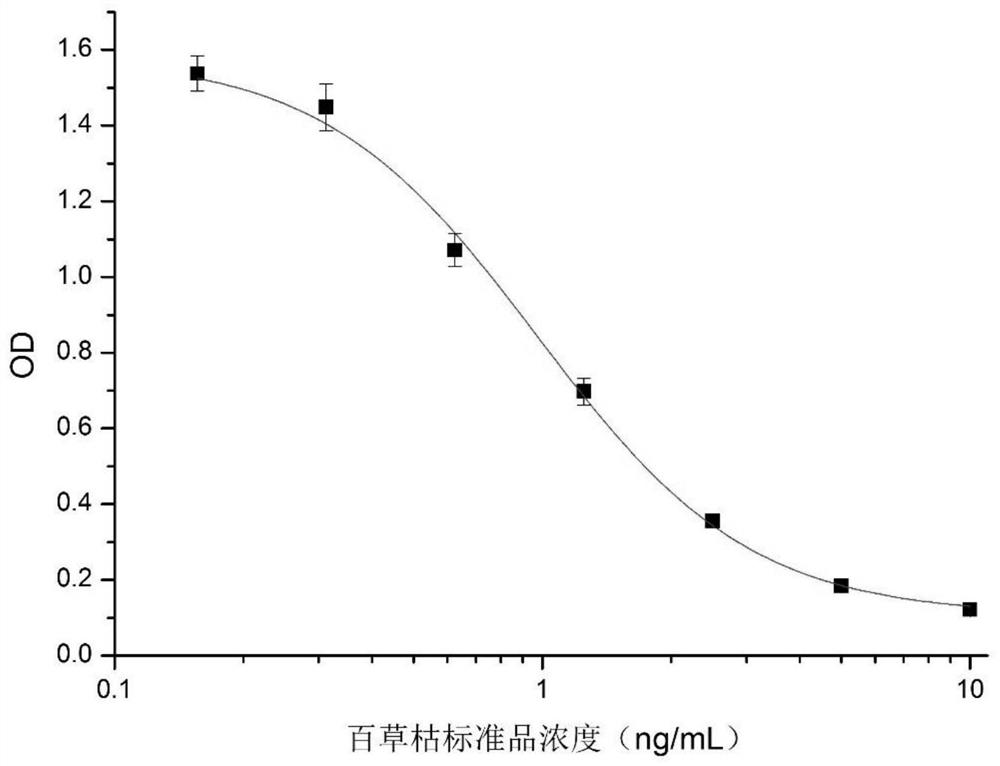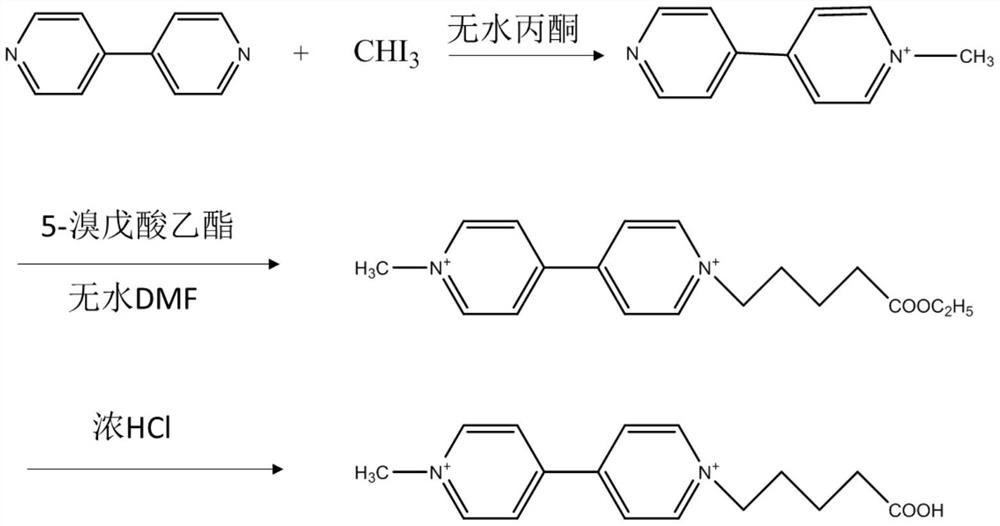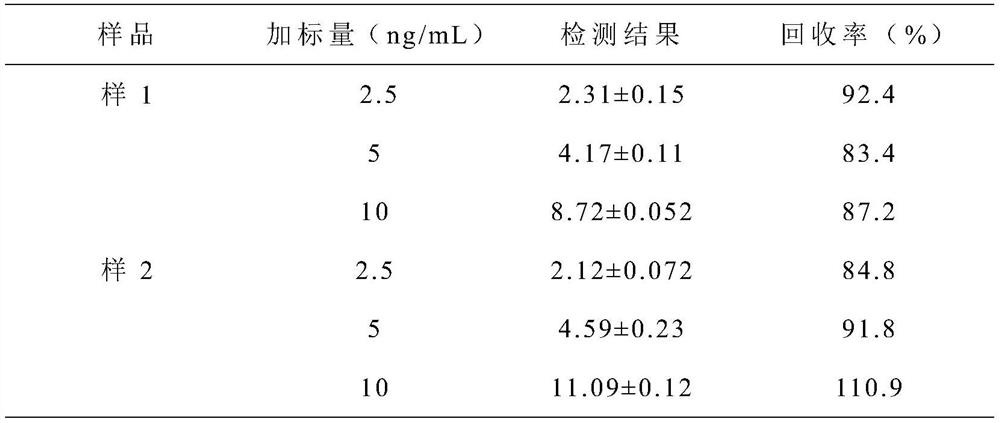A kind of paraquat monoclonal antibody hybridoma cell line and its application
A technology of monoclonal antibody and paraquat, which is applied in the application, fusion of cells, and cells modified by introducing foreign genetic material, etc., can solve the problems of inapplicable rapid detection of a large number of samples, complex pretreatment, and time-consuming
- Summary
- Abstract
- Description
- Claims
- Application Information
AI Technical Summary
Problems solved by technology
Method used
Image
Examples
Embodiment 1
[0032] The preparation of embodiment 1 hybridoma cell line LH1
[0033] 1. Derivation of hapten: 4,4'-bipyridyl and methyl iodide as starting materials, synthesized N-methyl-N'-pentanoyl-dipyridine dibromide as the hapten of paraquat, record for Para-COOH.
[0034]2. Preparation of complete antigen Para-COOH-KLH: Weigh 2.7mg Para-COOH, 2.7N-hydroxysuccinimide (NHS), dissolve in 300μL anhydrous N,N-dimethylformamide (DMF) , stirred at room temperature for 10 min; then weighed 4.8 mg of N,N'-dicyclohexylcarbodiimide (DCC), dissolved it in 100 μL of anhydrous DMF, added it to the Para-COOH solution, and stirred at room temperature for 6-8 h ( called liquid A). Take 6.8mg KLH, add 1mL 0.01M phosphate buffer solution (PBS, pH=7.4) to dilute (referred to as solution B), then slowly add solution A to solution B drop by drop, react at room temperature overnight; then use 0.01M PBS solution Dialysis to remove the unreacted small molecule hapten to obtain the complete antigen Para-CO...
Embodiment 2
[0043] (1) Coating: The coated Para-COOH-OVA was diluted 3-fold with 0.05M pH9.6 carbonate buffer starting from 1 μg / mL, 100 μL / well, and reacted at 37°C for 2 hours.
[0044] (2) Washing: Pour off the solution in the plate, and wash 3 times with washing liquid, each time for 3 minutes.
[0045] (3) Blocking: After patting dry, add 200 μL / well blocking solution and react at 37°C for 2 hours. Wash and tumble dry for later use.
[0046] (4) Adding samples: Dilute the antiserum starting from 1:1000, and add it to the coated wells of each dilution, 100 μL / well, and react at 37°C for 30 minutes; after fully washing, add 1:3000 diluted HRP - Goat anti-mouse IgG, 100 μL / well, react at 37°C for 30 minutes.
[0047] (5) Color development: Take out the ELISA plate, after washing thoroughly, add 100 μL of TMB color development solution to each well, and react in the dark at 37°C for 15 min.
[0048] (6) Termination and measurement: 50 μL of stop solution was added to each well to term...
Embodiment 3
[0050] Taking water resources as an example, detecting paraquat residues in them
[0051] (1) Sample pretreatment: Negative samples (named sample 1 and sample 2) were obtained from the Jiangsu Import and Export Inspection and Quarantine Bureau, added with Para and centrifuged, and 50 μL of the supernatant (or diluted to a certain extent) was used for detection.
[0052] (2) Sample detection: According to the steps of Example 2, label drawing and actual detection were carried out at the same time, and the results are shown in Table 1. The recovery rate is 83.4%-110.9%, the matrix interference is small, and the result is ideal.
[0053] Table 1. ic-ELISA detection of spiked water samples (n=6)
[0054]
PUM
 Login to View More
Login to View More Abstract
Description
Claims
Application Information
 Login to View More
Login to View More - R&D
- Intellectual Property
- Life Sciences
- Materials
- Tech Scout
- Unparalleled Data Quality
- Higher Quality Content
- 60% Fewer Hallucinations
Browse by: Latest US Patents, China's latest patents, Technical Efficacy Thesaurus, Application Domain, Technology Topic, Popular Technical Reports.
© 2025 PatSnap. All rights reserved.Legal|Privacy policy|Modern Slavery Act Transparency Statement|Sitemap|About US| Contact US: help@patsnap.com



